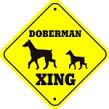| View previous topic :: View next topic |
| Author |
Message |
Scott W
Site Admin

Joined: 15 Apr 2004
Posts: 13355
Location: London, England.
|
 Posted: Wed Dec 27, 2006 2:13 pm Post subject: Mating Weights? Posted: Wed Dec 27, 2006 2:13 pm Post subject: Mating Weights? |
 |
|
Just curious what's the lowest weight anyone has bred a male at, and had fertile eggs?
I have a small albino male, I'm guessing under 450g's and he's been mating albinos and hets for the last 7 days.
I have heard several accounts of males that are less than a year old breeding and fertilising eggs, youngest being 4 months old (although I don't know what the weight was).
_________________

Please DO NOT pm orders for reptiles, send email instead scott@captivebred.co.uk |
|
| Back to top |
|
 |
SteveL
Captivebred Communist

Joined: 30 Apr 2006
Posts: 1531
Location: Cov
|
 Posted: Wed Dec 27, 2006 3:11 pm Post subject: Posted: Wed Dec 27, 2006 3:11 pm Post subject: |
 |
|
if hes doing the job i would say hes ready for it
good luck 
_________________

| jezz wrote: | | I dont understand SteveL's sarcasm dohhh |
|
|
| Back to top |
|
 |
Spiderman
Contributing Member

Joined: 15 Dec 2006
Posts: 157
Location: Warwickshire
|
 Posted: Wed Dec 27, 2006 4:10 pm Post subject: Posted: Wed Dec 27, 2006 4:10 pm Post subject: |
 |
|
I think the general feeling on this topic is that, younger and lighter males can and will breed at the weight and age you stated, but there is less chance of successful fertilisation. Males generally breed consistently at 800+ Grams. Therefore I think that males breeding at less than 800 Grams sucessfully is the exception to the rule. 
_________________
Deano |
|
| Back to top |
|
 |
Scott W
Site Admin

Joined: 15 Apr 2004
Posts: 13355
Location: London, England.
|
 Posted: Thu Dec 28, 2006 2:58 pm Post subject: Posted: Thu Dec 28, 2006 2:58 pm Post subject: |
 |
|
I weighed him last night, 446 grams.
He hasn't fed since September either, so I guess he would be nearer the 600g's if he had good body weight.
_________________

Please DO NOT pm orders for reptiles, send email instead scott@captivebred.co.uk |
|
| Back to top |
|
 |
rachel132002
Contributing Member
Joined: 08 Sep 2005
Posts: 194
Location: Essex
|
 Posted: Tue Jan 09, 2007 1:44 am Post subject: Posted: Tue Jan 09, 2007 1:44 am Post subject: |
 |
|
I've always seen it as 600-800g is the average on successful matings but you never know i guess until you try, as for sperm plugs well learnt my new interesting fact the other day that in fact they aren't actually sperm at all and are no indicator of whether a male is fit to breed or not just shed skins of the hemipenes or something on those lines.
Rach
_________________
20 Corns
30 Royals
3 BCI
2 BCC
2 JCP
2 Leos
1 Beardy
2 Cresties |
|
| Back to top |
|
 |
rachel132002
Contributing Member
Joined: 08 Sep 2005
Posts: 194
Location: Essex
|
 Posted: Tue Jan 09, 2007 3:57 pm Post subject: Posted: Tue Jan 09, 2007 3:57 pm Post subject: |
 |
|
quite possibly lol - just whats written in the VPI book
_________________
20 Corns
30 Royals
3 BCI
2 BCC
2 JCP
2 Leos
1 Beardy
2 Cresties |
|
| Back to top |
|
 |
Scott W
Site Admin

Joined: 15 Apr 2004
Posts: 13355
Location: London, England.
|
 Posted: Tue Jan 09, 2007 5:03 pm Post subject: Posted: Tue Jan 09, 2007 5:03 pm Post subject: |
 |
|
| rachel132002 wrote: | | quite possibly lol - just whats written in the VPI book |
I read the same thing...it threw me a bit too 
_________________

Please DO NOT pm orders for reptiles, send email instead scott@captivebred.co.uk |
|
| Back to top |
|
 |
RonW
CaptiveBred Addict!

Joined: 16 Jan 2006
Posts: 536
Location: netherlands
|
 Posted: Tue Jan 09, 2007 5:04 pm Post subject: sperm plugs Posted: Tue Jan 09, 2007 5:04 pm Post subject: sperm plugs |
 |
|
| The Eggman wrote: | | LoL. I think a lot of rather large american breeders who have MANY years of breeding royals under their belts would disagree with that statement. |
Wouldn't be the first time that something people always assumed to be A turned out to be B. Has anyone really checked that these things are sperm plugs and not hemipenal sheds? I wouldn't be surprised of they are because sometimes you see nice sheds with parts from within the snake, sometimes not. And that has to come out at some point.
Funny thing is garters USE sperm plugs. After the male fertilizes the female he puts in a plug to stop others getting access and maybe also to keep the sperm in. So actually if you find a plug in a garter it may be a female 
http://www.nature.com/nature/journal/v267/n5609/abs/267345a0.html |
|
| Back to top |
|
 |
|









